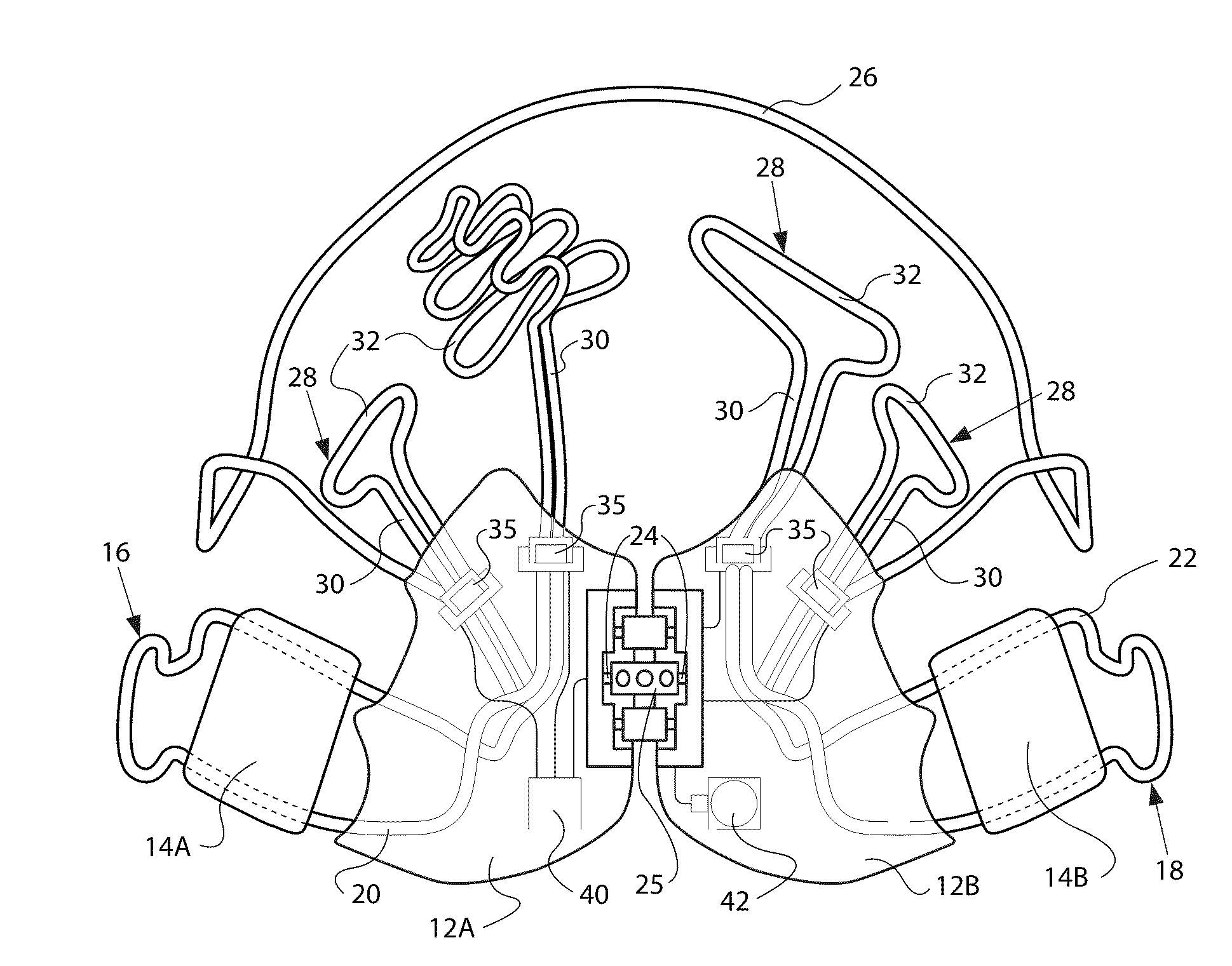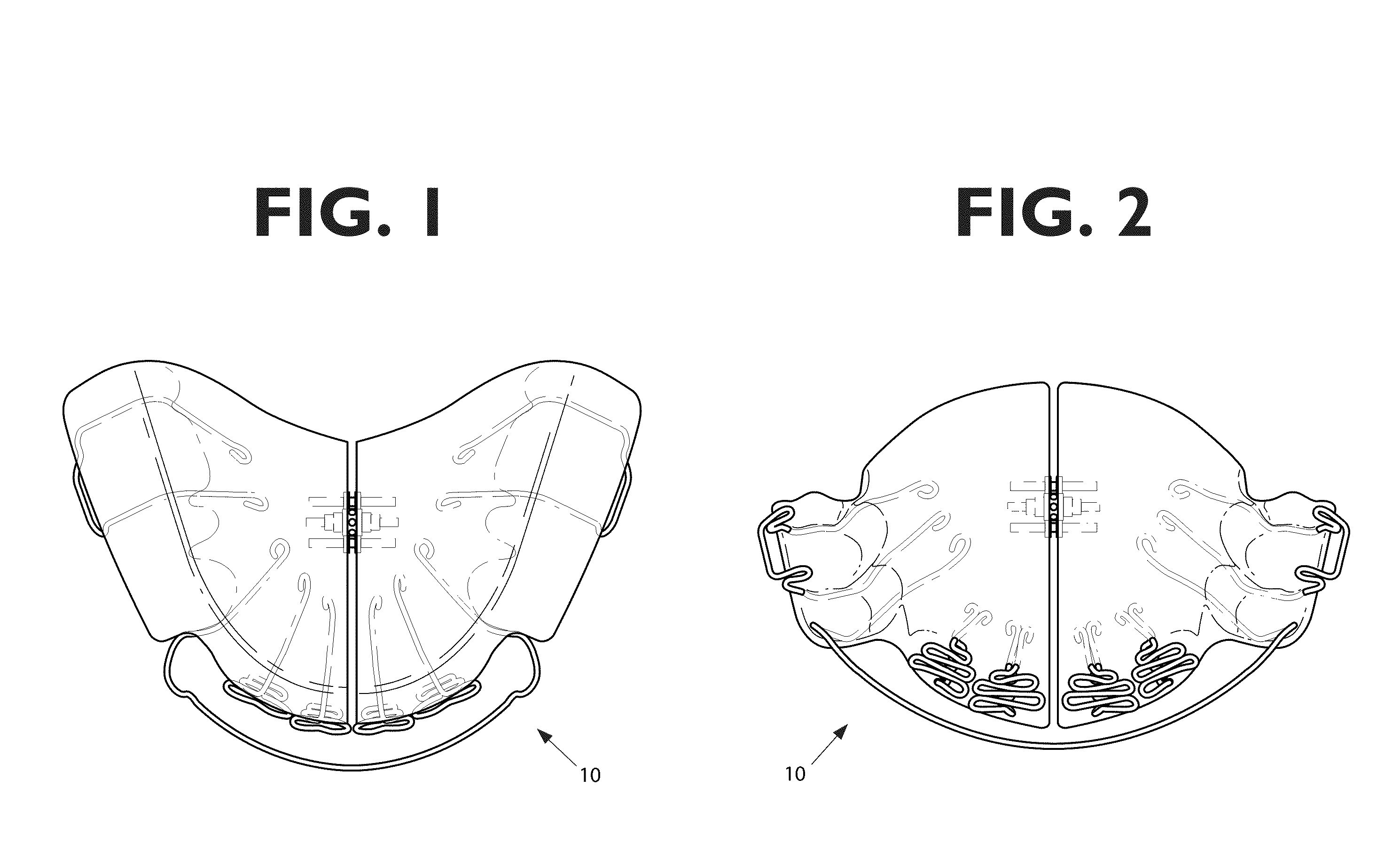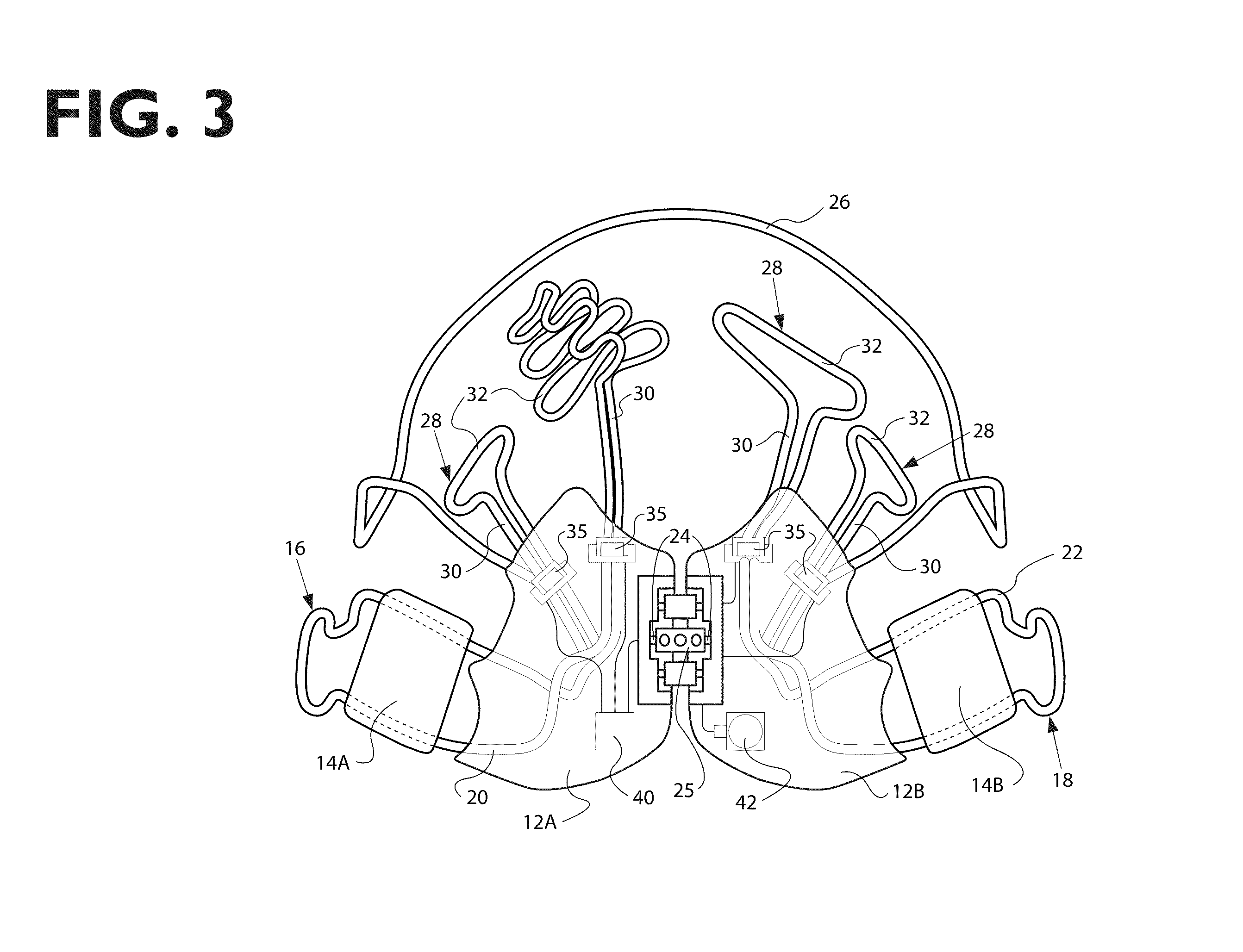Osteogenetic-orthodontic device, system, and method
a technology of orthodontic devices and orthodontic implants, applied in the field of osteogeneticorthodontic devices, systems and methods, can solve the problems of irregular teeth alignment, tooth alignment, and insufficient treatment of the underlying, and achieve the effect of good retention
- Summary
- Abstract
- Description
- Claims
- Application Information
AI Technical Summary
Benefits of technology
Problems solved by technology
Method used
Image
Examples
Embodiment Construction
[0088]Possible preferred embodiments will now be described with reference to the drawings and those skilled in the art will understand that alternative configurations and combinations of components may be substituted without subtracting from the invention. Also, in some figures certain components are omitted to more clearly illustrate the invention.
[0089]The present invention, in a first preferred embodiment, includes a treatment method including the following procedures:
[0090]The clinician should first be able to visualize the effects of ideal facial development for a given patient. Next, a clinical examination of the head, neck and facial area is performed followed by a postural evaluation. Diagnostic imaging is then performed using lateral cephalographs, panoral radiography, computerized tomography, Cone-beam CT scan, and / or MRI. Photographic images are also taken intra-orally, extra-orally, and posturally. Three-dimensional techniques such as stereophotogrammetry or laser scan s...
PUM
 Login to View More
Login to View More Abstract
Description
Claims
Application Information
 Login to View More
Login to View More - R&D
- Intellectual Property
- Life Sciences
- Materials
- Tech Scout
- Unparalleled Data Quality
- Higher Quality Content
- 60% Fewer Hallucinations
Browse by: Latest US Patents, China's latest patents, Technical Efficacy Thesaurus, Application Domain, Technology Topic, Popular Technical Reports.
© 2025 PatSnap. All rights reserved.Legal|Privacy policy|Modern Slavery Act Transparency Statement|Sitemap|About US| Contact US: help@patsnap.com



